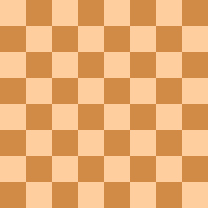Danvers Opening
| Moves | 1.e4 e5 2.Qh5 |
|---|---|
| ECO | C20 |
| Parent | Open Game |
| Synonym(s) | Kentucky Opening Queen's Attack Queen's Excursion Wayward Queen Attack Patzer Opening Parham Attack |
The Danvers Opening, also known as the Kentucky Opening,Queen's Attack,Queen's Excursion,Wayward Queen Attack,Patzer Opening or Parham Attack is an unorthodox chess opening characterized by the moves:
Like many rare openings, 1.e4 e5 2.Qh5 has acquired several names over the years, none of which are universally used. The earliest known appearance in print was in the Dubuque Chess Journal in May 1875, where it was dubbed the Kentucky Opening, perhaps in reference to a game played in Danville, Kentucky, which was published in the August issue of the same magazine. (This name was also applied by J. H. Blackburne to the unsound Jerome Gambit.) In the American Chess Bulletin in 1905, the opening was referred to as the Danvers Opening, so named by E. E. Southard, a well-known psychiatrist and a strong amateur chess player, after the hospital where he worked.
Bernard Parham of Indianapolis is the first master-level player known to have advocated this line. Parham is known for his eccentric theories on the game of chess, which he has developed into what he calls the "Matrix System". Parham's Matrix System advocates early development of the queen in several positions, as in his favored line as White against the Sicilian Defence, 1.e4 c5 2.Qh5?! Parham argues that just as Richard Réti and Aron Nimzowitsch pioneered the hypermodern style of chess, his own ideas which are considered strange today may well be considered viable in the future. Several internet-based sources refer to 1.e4 e5 2.Qh5 as the Parham Attack or Parham Opening.
The most notable use of 1.e4 e5 2.Qh5 by a grandmaster occurred in 2005, when U.S. Champion and future World Championship contender Hikaru Nakamura played it in two tournament games. The best known of these was against Indian GM Krishnan Sasikiran at the May 2005 Sigeman Tournament in Copenhagen/Malmö, Denmark. Nakamura got a reasonable position out of the opening but lost the game due to a mistake made in the middlegame. He later wrote on the Internet, "I do believe that 2.Qh5 is a playable move, in fact I had a very good position in the game, and was close to winning if I had in fact played 23.e5." The previous month, Nakamura had played 2.Qh5 against GM Nikola Mitkov at the April 2005 HB Global Chess Challenge in Minneapolis. The game ended in a draw after 55 moves.
...
Wikipedia

